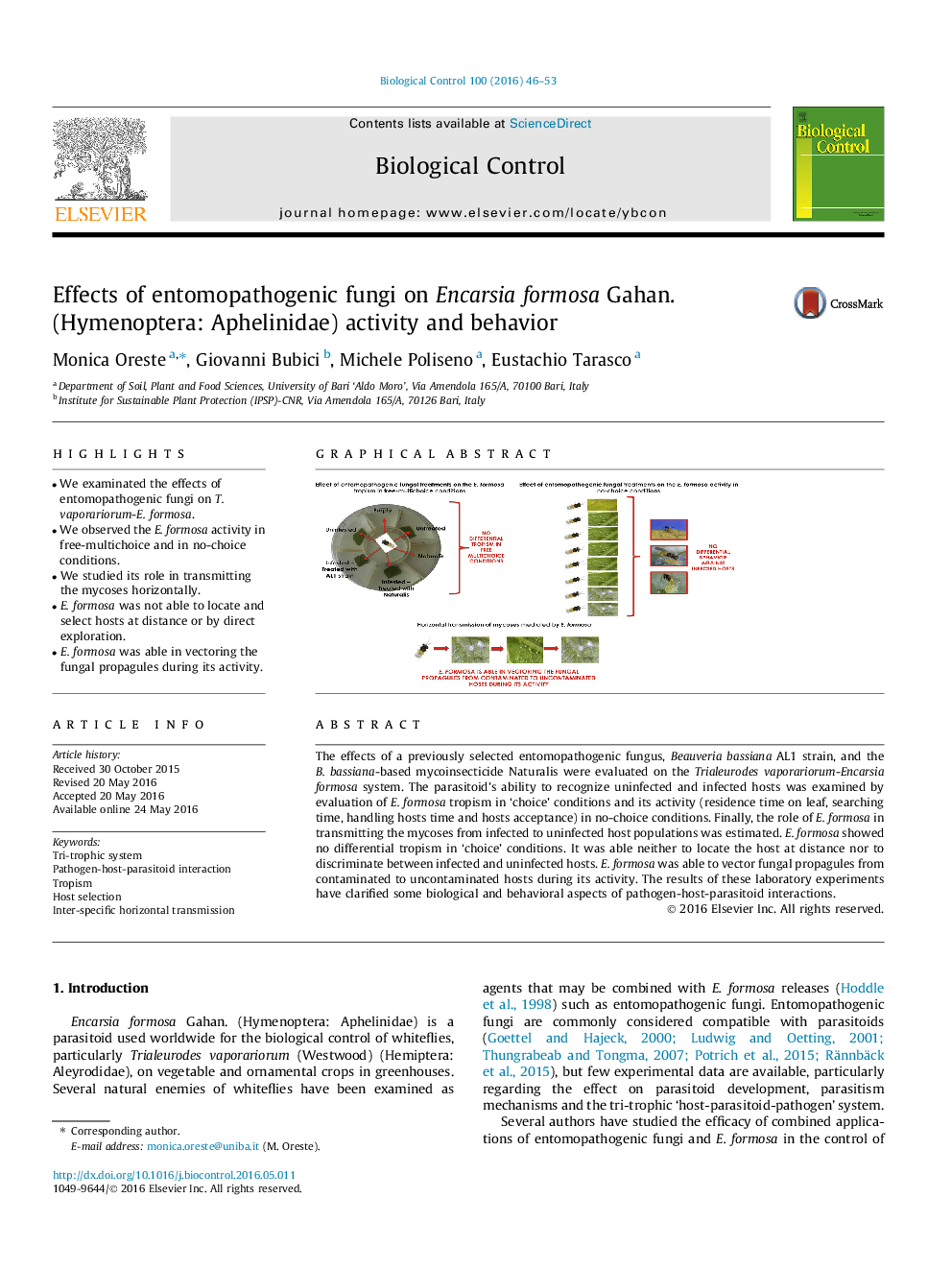| Article ID | Journal | Published Year | Pages | File Type |
|---|---|---|---|---|
| 4503586 | Biological Control | 2016 | 8 Pages |
•We examinated the effects of entomopathogenic fungi on T. vaporariorum-E. formosa.•We observed the E. formosa activity in free-multichoice and in no-choice conditions.•We studied its role in transmitting the mycoses horizontally.•E. formosa was not able to locate and select hosts at distance or by direct exploration.•E. formosa was able in vectoring the fungal propagules during its activity.
The effects of a previously selected entomopathogenic fungus, Beauveria bassiana AL1 strain, and the B. bassiana-based mycoinsecticide Naturalis were evaluated on the Trialeurodes vaporariorum-Encarsia formosa system. The parasitoid’s ability to recognize uninfected and infected hosts was examined by evaluation of E. formosa tropism in ‘choice’ conditions and its activity (residence time on leaf, searching time, handling hosts time and hosts acceptance) in no-choice conditions. Finally, the role of E. formosa in transmitting the mycoses from infected to uninfected host populations was estimated. E. formosa showed no differential tropism in ‘choice’ conditions. It was able neither to locate the host at distance nor to discriminate between infected and uninfected hosts. E. formosa was able to vector fungal propagules from contaminated to uncontaminated hosts during its activity. The results of these laboratory experiments have clarified some biological and behavioral aspects of pathogen-host-parasitoid interactions.
Graphical abstractFigure optionsDownload full-size imageDownload as PowerPoint slide
